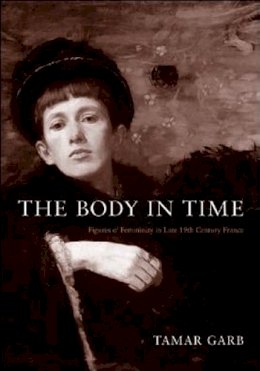7%OFF

Stock image for illustration purposes only - book cover, edition or condition may vary.
The Body in Time: Figures of Femininity in Late Nineteenth-Century France (University of Kansas Franklin D. Murphy Lecture)
Tamar Garb
€ 31.99
€ 29.82
FREE Delivery in Ireland
Description for The Body in Time: Figures of Femininity in Late Nineteenth-Century France (University of Kansas Franklin D. Murphy Lecture)
Paperback. Looks at two different genres in relation to the construction of femininity in late nineteenth-century France - Degas' representation of ballet dancers and the transforming tradition of female portraiture. Series: University of Kansas Franklin D. Murphy Lecture Series. Num Pages: 96 pages, 41 illustrations. BIC Classification: 1DDF; 3JH; ACV; AFC; AGHF. Category: (UP) Postgraduate, Research & Scholarly. Dimension: 253 x 181 x 6. Weight in Grams: 259.
The Body in Time looks at two different genres in relation to the construction of femininity in late nineteenth-century France: Degas's representation of ballet dancers and the transforming tradition of female portraiture. Class, gender, power, and agency are at stake in both arenas, but they play themselves out in different ways via different pictorial languages.
Degas's depictions of anonymous young female ballerinas at the Paris Opera reflect his fascination with the physical exertions and prosaic setting of the dancer's sexualized body. Unlike the standard Romantic depictions of the ballerina, Degas's dancers are anonymous spread-legged workers on public display. Female ... Read more
Product Details
Format
Paperback
Publication date
2008
Publisher
University of Washington Press
Condition
New
Series
Franklin D. Murphy Lecture Series
Number of Pages
96
Place of Publication
Seattle, United States
ISBN
9780295987934
SKU
V9780295987934
Shipping Time
Usually ships in 15 to 20 working days
Ref
99-2
About Tamar Garb
Tamar Garb is Durning Lawrence Professor in Art History, University College, London.
Reviews for The Body in Time: Figures of Femininity in Late Nineteenth-Century France (University of Kansas Franklin D. Murphy Lecture)
"It is fluidly written and engaging . . . there is much to like in this book. Garb's insights on the femme nouvelle, in particular, are noteworthy, and scholars of gender and modern France, or of gender and modern art, will find them worth reading."
H-Net
H-Net
